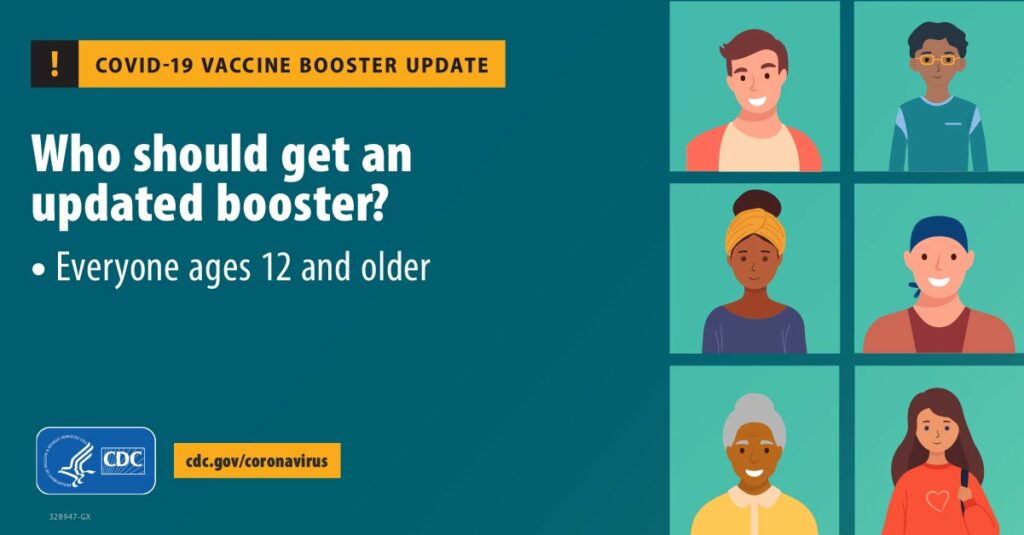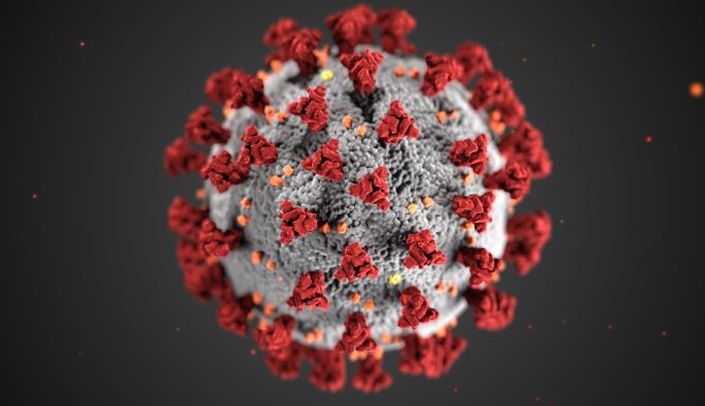Updated COVID-19 boosters now are available to everyone ages 12 and up. These updated COVID-19 boosters are bivalent. That means they offer protection against the latest omicron variants of BA.4 and BA.5, plus the original COVID-19 strain.
“We have been using mRNA COVID-19 vaccines for two years, and over 2 billion doses have been given worldwide. These vaccines have a good safety record,” said James Lawler, MD, an infectious diseases physician with Nebraska Medicine and co-executive director of the UNMC Global Center for Health Security. “As we face continued high rates of BA.5 infection in communities and the likely prospect of increasing spread of COVID-19 this fall, an updated booster gives you additional protection against severe disease, hospitalization, death and likely long COVID.”
Currently, BA.4 and BA.5 variants account for more than 90% of COVID-19 cases in the United States. Current variant proportions in the U.S. and by regions are available at the Centers for Disease Control and Prevention. A booster that protects against these later variants should slow the spread of COVID-19 this fall.
The bottom line: Everyone 12 years and older can get an updated bivalent booster. It doesn’t matter how many boosters someone has had before, as long as they completed a primary series.
Nebraska Medicine will offer the updated COVID-19 booster to the med center community as soon as supply is available. Updates on vaccine availability will be shared at NebraskaMed.com/Vaccine.
Who can get an updated (bivalent) booster?
- Pfizer booster: Everyone age 12 and older
- Moderna booster: Everyone age 18 and older
As long as someone has completed a primary COVID-19 series (two doses of Pfizer or Moderna or one dose of Johnson & Johnson), they can get one bivalent booster. It should be two months or longer after someone’s last COVID-19 vaccine or booster to get the bivalent booster.
Children 5 years through 11 years should receive one original (monovalent) booster dose. Children ages 6 months to 5 years aren’t authorized to receive any booster at this time.

Can I still get the original (monovalent) COVID-19 mRNA vaccine?
The new bivalent boosters combine half the original mRNA vaccine targeting the Wuhan (original) strain and half the new mRNA vaccine targeting the BA.4/BA.5 variants.
The original monovalent mRNA vaccines continue to be available for primary series vaccination (first two doses) and for boosters for children aged 5 to 11 years who have not previously received a booster. With the decision to approve the new bivalent booster vaccines, the Food and Drug Administration specified that the original monovalent COVID-19 vaccines are no longer authorized for use as boosters in people 12 years and older.
What are booster recommendations for immunocompromised people?
See the complete bivalent booster recommendations for immunocompromised people from the CDC. In sum, someone can get a bivalent booster at least two months after their primary series.
Primary series: Pfizer or Moderna
- 3 doses of Moderna or Pfizer (primary series)
- 1 bivalent booster at least two months after the last dose of vaccine (immunocompromised already could have received up to two additional – fourth and fifth doses – of monovalent vaccine)
Primary series: Novavax
- 2 doses of Novavax (primary series)
- 1 bivalent booster at least two months after the last dose of vaccine
Primary series: Johnson & Johnson
- 1 dose of Johnson & Johnson (primary series)
- 1 dose of mRNA vaccine (and up to two additional booster doses – third and fourth – of mRNA vaccine)
- 1 bivalent booster at least two months after the last dose of vaccine
Can I get the updated bivalent booster with the flu shot? Yes.
For the best protection, get both the updated COVID-19 booster and the flu shot (influenza vaccine) this fall. Just like last year, people can get the COVID-19 booster at the same time as their flu shot.
Are vaccines working? Yes.
Vaccines still protect against severe outcomes from COVID-19. Adults who have had a primary series plus two boosters had a 14 times lower risk of death from COVID-19 compared to unvaccinated people. And people who had a second booster had a three times lower risk of death than people who had only one booster.
Are the boosters safe? Available evidence says yes.
More than 262 million people in the U.S. have had at least one dose of the COVID-19 vaccines. The COVID-19 vaccines have been rigorously tested and studied since early 2020. Worldwide more than 2 billion doses of these vaccines have been given since late 2020.
The data available on the bivalent BA.4/BA.5 fall boosters is from studies of human serum and mice. Because they are slight variations on the previous monovalent mRNA vaccines (for which there are large amounts of safety data), the FDA has determined that extensive human clinical trials are not needed to ensure safety. This is the same process followed for the influenza (flu) vaccine every year. The flu vaccine is updated yearly based on which strains are likely to be the most widespread. After the platform is thoroughly tested in human clinical trials for initial product approval, the flu shot variant is updated each year. The annual flu vaccine updates do not require additional human testing. If we did wait for human testing each year, we would not get protection from the vaccines while the flu spreads unchecked.
The FDA and CDC authorized the same approach for the COVID-19 updated booster. The COVID-19 vaccine platform remains the same, but the specific code is updated to match variants BA.4 and BA.5.
Should I get vaccinated if I’ve had COVID-19? Yes.
COVID-19 vaccines are recommended if someone had COVID-19. During omicron, reinfections increased. Reinfections have increased even more with BA.5. Studies clearly show that the best protection against reinfection, hospitalization and death comes from previous infection plus up-to-date vaccination.
If you’ve recently had COVID-19, the CDC and most experts recommend a dose of vaccine one to four weeks after resolution of symptoms (if eligible).
Do I have to get the same vaccine as my original type? No.
People who are 18 years or older can choose between Pfizer and Moderna as a bivalent booster dose. Some people may prefer the vaccine type that they originally received. Others may prefer to get a different type for their booster. CDC recommendations allow for this mix-and-match dosing for booster shots.
How big is the bivalent booster dose?
The Pfizer updated bivalent booster dose is 30 mcg.
- 15 mcg original COVID-19 variant (from 2020)
- 15 mcg BA.4/BA.5 variant (from 2022)
The Moderna updated bivalent booster dose is 50mcg.
- 25 mcg original COVID-19 variant (from 2020)
- 25 mcg BA.4/BA.5 variant (from 2022)

Thank you for all you do.